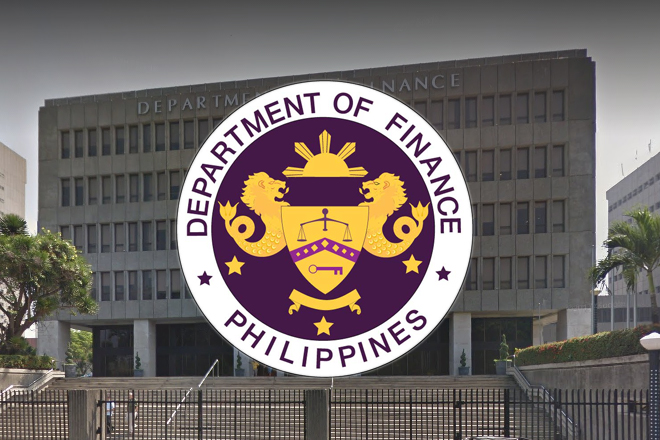Philippine working with ASEAN on disaster risk insurance scheme
October 19, 2017
The Philippines has teamed up with other member-states of the Association of Southeast Asian Nations (ASEAN) to improve catastrophic reinsurance initiatives that will help communities across the region recover faster from the impact of natural disasters and other adverse effects of climate change, according to Finance Secretary Carlos Dominguez III.
In a statement by the Department of Finance Thursday, Dominguez said the Philippines is also working on improving building standards to ensure that structures are climate-resilient, and is expediting the rehabilitation of existing irrigation systems while constructing new ones, particularly in the northern and southern parts of the archipelago, among other initiatives to mitigate the impact of erratic climate patterns resulting from global warming.
Underscoring the urgency of addressing the impact of climate change on the economy, Dominguez said that he has assigned an assistant secretary in his department to focus primarily on this aspect, specifically on developing mechanisms that would make disaster-prone areas in the country more resilient against calamities.
He was referring to Assistant Secretary and DOF spokesperson Paola Alvarez.
“We are working with the different ASEAN countries as well as our different agencies to improve the catastrophic reinsurance (programs), to improve the standards for construction of homes and buildings. We are working with [our] Department of Environment and Natural Resources and Department of Agriculture, to mitigate the effects of climate change,” said Dominguez at a recent forum on the Philippine economy organized here by the Center for Strategic and International Studies (CSIS) in Washington DC.
The CSIS is a bipartisan, nonprofit policy research group that provides proposed policy solutions to current and emerging global issues. It is headed by John Hamre, a former deputy secretary of the US Department of Defense.
This private think tank, which has a contingent of policy experts in various fields, is regularly called upon by the US Congress, the White House and the media to offer recommendations on improving US strategy on a wide range of global concerns.
Dominguez said at the CSIS forum that the impact of climate change is now being increasingly felt in the Philippines, particularly in Mindanao, which used to be mostly typhoon-proof, but now appears to be on the path of many tropical storms that have occurred recently in the country.
“As you know, [in Mindanao] we never had typhoons there. We had typhoons once every 70 years in Mindanao,” said Dominguez. “However, now we are observing that with climate change, the typhoons seem to be forming further south in the Pacific Ocean, and which brings northern Mindanao directly in the path of the typhoons.”
He said this adverse effect of climate change has, in the recent past, led to flashfloods in Cagayan de Oro and Iligan, two of Mindanao’s highly urbanized cities; and also in the province of Bukidnon, a major food producer in southern Philippines.
The Philippines has recently made available a P1 billion insurance fund under its Parametric Insurance Pilot project to 25 disaster-prone provinces in the country to help them act faster and better respond to the devastating impact of natural calamities.
Unlike the traditional indemnity insurance that takes a long time to assess and process, this Parametric Insurance Pilot will have quick-disbursing payouts whose amounts will depend on the estimated loss triggers determined through the Philippines’ Catastrophic Risk Model developed by the Department of Finance (DOF) in 2014.
According to Assistant Secretary Alvarez, the project covers 25 local government units (LGUs) that include the provinces of Aurora, Cagayan, Camarines Norte, Camarines Sur, Catanduanes, Cebu, Davao del Sur, Davao Oriental, Dinagat Islands, Eastern Samar, Ilocos Norte, Ilocos Sur, Isabela, Laguna, Northern Samar, Pampanga, Quezon, Rizal, Sorsogon, Surigao del Norte, Surigao del Sur and Zambales.
The project is being implemented with assistance from the World Bank, she said.
According to Alvarez, potential beneficiary-LGUs can avail themselves of the insurance cover in the event of a catastrophic earthquake or typhoon from the Government Service Insurance System (GSIS), with coverage fully ceded to the international reinsurance market, thus minimizing risks for the government.
“Because the Bureau of Treasury is the policyholder, the funds will be mobilized faster to the first responders, namely, the national government and the LGUs,” Alvarez had said.
The Pilot, consistent with the Philippines’ Disaster Risk Financing and Insurance Strategy, is effective for one year starting on July 28, 2017. This project fulfills part of the expected outcomes of the National Disaster Risk Reduction and Management (NDRRM) Plan 2011-2028.
Alvarez said the premium payments will be financed through an NDDRM Fund allocation earmarked for the insurance of government facilities.
Premiums will have two categories: disaster-specific and province-specific.
For disaster-specific premiums, P500 million of the fund will be allocated as follows: 79.2 percent for typhoons and 20.8 percent for earthquakes.
The other P500 million will be province-specific and split equally among the 25 provinces at P20 million each. DMS
Latest Videos
- THE UNTOLD STORY EXPERT INSIGHTS INTO THE UKRAINE
- NEGOTIATING A NEW ORDER US RUSSIA TALKS ON UKRAIN
- Ukraine: A Pawn in the Geopolitical Game? Will Trump Intervene?
- US VP VANCE CRITICIZES EUROPEAN DEMOCRACIES AT MUNICH SECURITY CONFERENCE
- UNCOVERING THE WEB OF DECEIT: CIA INFILTRATION OF THE MEDIA
- SHIFTING SANDS: TULSI GABBARD’S CONFIRMATION AND THE EVOLVING GLOBAL LANDSCAPE
- FAUCI SCANDAL: A THREAT TO GLOBAL HEALTH AND DEMOCRACY






